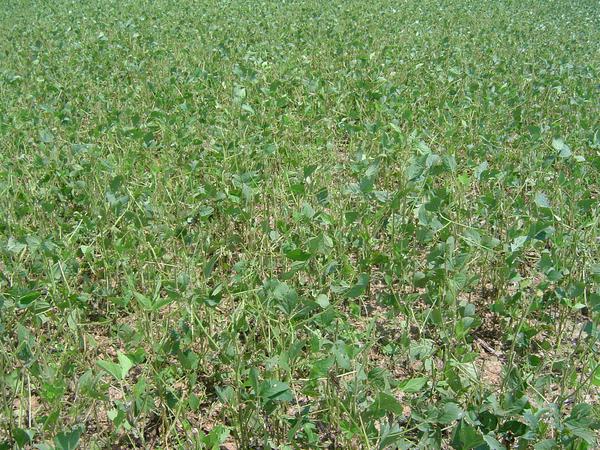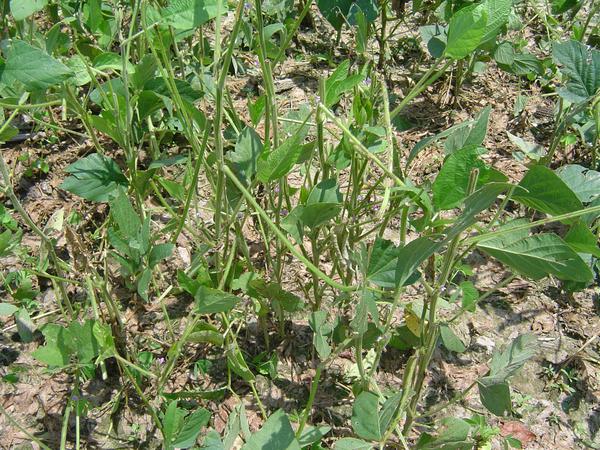Hail Damage
- Type
- Physiological
- Leaf Condition
- Distorted, Round Hole, Irregularly Shaped Holes
- Leaf Location
- Entire, Upper, Lower, Young, Mature
- Main Stem
- Lodges Above Soil Surface, Clipped
- Petioles Condition
- Clipped
- Plant Size
- Stunted
- Field Distribution
- Uniform
- Prior Environmental
- Rain, Wind, Thunderstorm
- Season
- Early Vegetative, Mid To Late Vegetative, Flowering, Pods Present, Harvest
Introduction
Hail damage can occur at any point in the soybean season and the severity of the damage depends on the type of injury, soybean growth stage when injured, and the remaining plant population. Types of injury can include stand loss, defoliation, stem damage, and pod damage. Soybeans are most susceptible to injury at early growth stages. If soybeans are in the crook stage, hail hitting the hypocotyl arch can cause the cotyledons to break off and those seedlings to die. After soybeans have fully emerged, even if a hailstorm broke off one cotyledon the plants have the opportunity to recover by sending new growth out the axillary buds at the cotyledonary nodes. The more vegetative growth on the soybean plants, the more likely the plants are to survive the hail event. Soybeans have the opportunity to send out new growth from all the axillary buds at the juncture where the stem meets the leaf. Soybeans have an incredible ability to compensate for early season injury through production of new vegetation.
Symptoms
Early season symptoms of hail damage can include snapped hypocotyls in the crook stage, reduced stand, and missing cotyledons. As the plant gets larger, hail damage can cause defoliation and stem damage. Stem damage can include cracked and bent stem. If there is stem damage, that could lead to a great likelihood of lodging at harvest. Although rare, pod damage or loss can occur.
Management
There is nothing a producer could do to prevent hail damage from occurring in their soybean fields, however once hail damage has occurred there are several management strategies that can be used on those fields.
If early season hail damage occurs, A producer should wait 3-5 days after the damage to assess soybean stand. That provides the soybean plant with time to recover. Once the producer has waited several days, soybean stand should be accurately assessed before making decisions about soybean replanting. The producer should look for healthy new tissue emerging from the apical and axillary meristems in order to count that plant in the final remaining population.
Subsequent pest management will be important in hail damaged fields. Weed control will be important as canopy reductions from hail damage could result in reduced competitiveness with weeds. Fields should be scouted and managed for disease and insects to protect the remaining canopy.
Additional Resources
Hail damage to soybean crops (University of Minnesota Extension)
Evaluating Hail Damage to Soybeans (University of Nebraska-Lincoln Extension)




